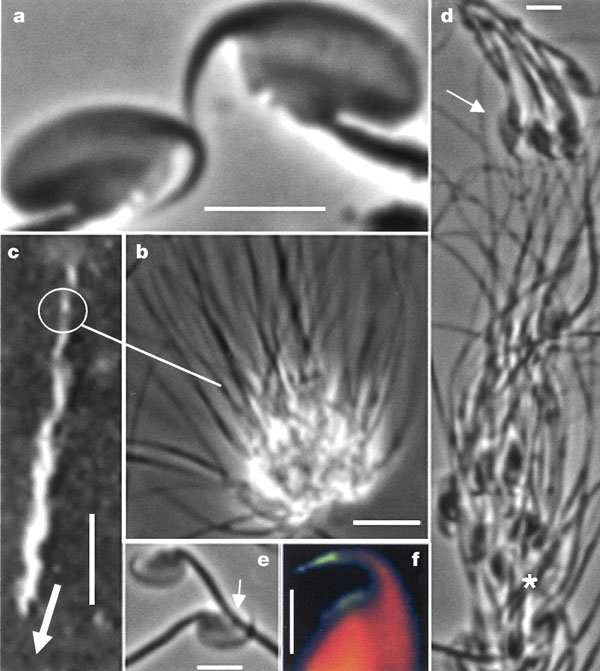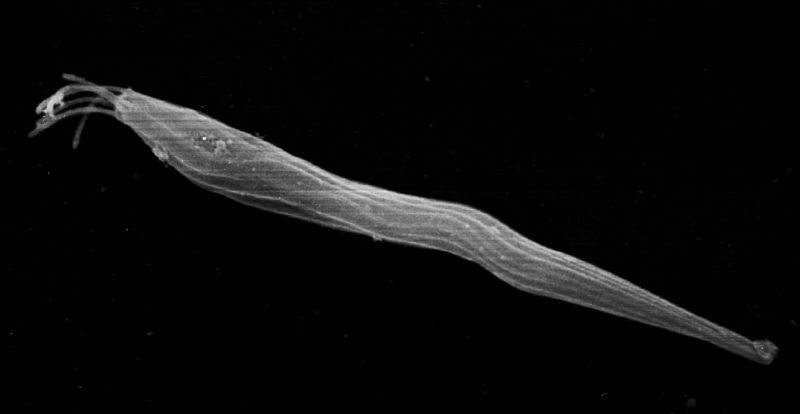The term sperm competition can be used in two ways.
In the broad sense, it involves a large range of morphological, behavioural and physiological attributes, including courtship and copulation behavior (for example, a male that guards females to ensure that he’s the father).
In the narrow sense, which is the focus of this article, sperm competition is used to denote the physiological processes occurring inside the female’s genital organs after multiple matings.
(For a brief review on the complexity of sperm selection, see Wigby and Chapman, 2004).
When it comes to sperm competition in the narrow sense, the question becomes whether it involves scramble competition (no interaction between sperm of different males, basically ‘getting there first’) or interference competition (with interaction), or a mixture of both.
One observation that strongly supports scramble competition, is that males of polyandrous species possess much larger testis (and produce a lot more sperm) than males of monogamous ones (for example, compare chimpanzees with gorillas, see Harcourt et al., 1981). Another (really cool) observation is that sperm might even cooperate to improve the odds of fertilization, as in the spermatozoa of the wood mouse, that form ‘trains’ to improve motility (see Moore et al., 2002) (see figure 1).

Figure 1: 'Barbed' sperm of the wood mouse, forming 'sperm trains' (Source: Moore et al., 2002)
But there are indications that interference competition also occurs. Sperm polymorphism is one observation that strongly points in this direction. For example, parasperm (non-fertile sperm produced through a constant developmental process) occurs in several invertebrates (see Hayakawa, 2007). Certain snails, for example, produce parasperm that contains lysozomes, possibly used against rival sperm (see Buckland-Nicks et al., 1999) (see figure 2).

Figure 2: Infertile parasperm of the snail species Fusitriton oregonensis. (Source: Wikimedia Commons, author: John Buckland-Nicks)
Recently, Manier et al., 2010, have been able to catch sperm competition red-handed in Drosophila, by creating transgenic males with red and green sperm (see video).
Competition between red and green sperm in Drosophila. (Source: Scott Pitnick, Syracuse University)
In vertebrates, this notion is more controversial (in some fish, there seems to be sperm polymorphism, see Hayakawa et al., 2007) . Baker and Bellis (1988) proposed the ‘kamikaze sperm hypothesis’, which basically states that mammals, even humans, produce a type of sperm the acts as ‘blockers’ for potential rival sperm. This, however, is not widely accepted (see, for example, Harcourt 1991). Although vertebrates, including mammals, may produce deformed sperm, this is no evidence for parasperm as it could have arisen due to developmental anomalies. Some sperm cells might just be ‘flawed’. So, interference competition among vertebrate sperm is still in need of empirical support. There is still a lot to learn, but further research will hopefully continue to elucidate the mechanisms of sperm competition.
References
Baker, R.R. and Bellis M.A. (1988). ‘Kamikaze’ Sperm in Mammals? Animal Behavior. 36, pp. 936 – 939.
Buckland-Nicks, J.; Bryson, I.; Hart, L. and Partridge, V. (1999). Sex and a snail’s sperm: on the transport, storage and fate of dimorphic sperm in Littorinidae. Invertebrate Reproduction and Development. 36, pp. 145 – 152.
Harcourt, A.H.; Harvey, P.H.; Larson, S.G. and Short, R.V. (1981). Testis weight, bodyweight and breeding system in primates. Nature. 293, pp. 55 – 57.
Harcourt, A.H. (1991). Sperm competition and the evolution of nonfertilizing sperm in mammals. Evolution. 45(2), pp. 314 – 328.
Hayakawa,Y. (2007). Parasperm: morphological and functional studies on nonfertile sperm. Ichthyological Research. 54(2), pp. 111 – 130.
Hayakawa,Y.; Takayama-Watanabe, E.; Watanabe, A.; Kobayashi, M.; Munehara, H. and Onitake, K. (2007). Partial formation of sperm dimorphism from spermatocytes of the cottoid fish, Hemilepidotus gilberti in cell culture. Zygote. 15, pp. 285 – 293.
Manier, M.K.; Belote, J.M.; Berben, K.S.; Novikov, D.; Stuart, W.T. and Pitnick, S. (2010). Resolving Mechanisms of Competitive Fertilization Succes in Drosophila melanogaster. Science. 328(5976), pp. 354 – 357.
Moore, H.; Dvoráková, K.; Jenkins, N. and Breed, W. (2002). Exceptional sperm cooperation in the wood mouse. Nature. 418, pp. 174 – 177.
Wigby, S. and Chapman, T. (2004). Sperm Selection. Current Biology. 14(3), pp. R100 – R103.(Click here)





Comments